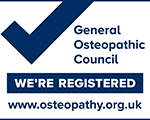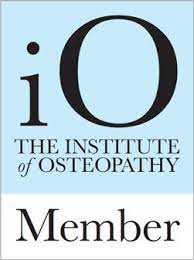Long term or chronic pain is usually defined as pain lasting more than twelve weeks. If you have ever or are currently suffering from it then you will know that it can be a debilitating condition which can severely affect quality of life. Depending on the severity of the pain and how long you have had it recovery can be a slow and frustrating process. However the body, brain and nervous system are all highly adaptable can can change in ways that reduce pain and improve quality of life. In this article we will discuss the differences between chronic and acute pain, how the body adapts to pain the steps you can take to help it adapt out of pain to get better.
In recent years pain research has come on in leaps and bounds, leading to better understanding of what pain is and how to treat it. A big part of these discoveries is a better understanding of the role that the brain and nervous system play in pain. This has lead to a shift of focus more towards the neurological and psychological aspects of pain, and away from the physical / bodily causes.
An important first step in recovering from chronic pain is to develop an understanding of the key differences between acute/ short-term pain and more long term/ chronic pain. Knowledge is power and through understanding your symptoms and the processes behind them you become more able to control and eventually overcome them.
Two very different types of pain
Short-term pain is an immediate response to injured tissue, whether that is a strained muscle, a damaged joint or broken bone.
If tissue injury does occur damage to body tissues causes the release of chemicals related to the healing process, these chemicals also stimulate nociceptors (pain sensitive nerve fibers), which relay a signal to the brain that something has happened in a specific area of your body.
fig 1

Within your brain there are maps of your body help pinpoint the location of a stimulus, an injury to your right hand will stimulate the “hand part” of the left side of your brain (as seen in figure 1 above), which will create the experience of pain leading to protective behaviours that prevent further injury, and allow recovery.
Brains interpretation and short-term pain:
The experience of pain isn’t always directionally proportional to the amount of damage that occurs. Pain is an output of the brain, and the brain will create that experience based on interpretation. The amount of pain you feel is strongly related to how dangerous or unpleasant you perceive the event as being, as well as your emotional state at the time. As an example image stubbing your toe whist jumping with joy to celebrate good news vs stubbing your toe whilst moping around on a cold dreary morning after hearing some bad news, the same stimulus (a stubbed toe) would lead to very different experience of pain in the two contrasting situations.
For a more detailed explanation and an excellent example of this watch this:
In summery short term pain is useful, it is there to protect us and motivate the appropriate response, which is to limit pain-causing activities to allow recovery and repair to take place, followed by a gradual progressive return to activities.
Long-term chronic pain:
The short-term pain described above is very different from chronic long-term pain. Gradual changes occur, and the pain progressively moves from being stimulated by damaged tissues, to being amplified and even generated in the brain and central nervous system.
Sensitisation is the process where, through repeated exposure to pain our body and brain becomes more adapt at experiencing and producing it. In this state a stimulus that wouldn’t have normally caused pain or discomfort now does, and a physical stress that isn’t enough to cause any physical damage can lead to severe pain experience. This occurs partly through the loss of the brains and spinal cords ability to inhibit pain, and through an increased ability to sense it due to reduced threshold at neural junctions in the local area, and enlargement and sensitization of the brains body map (fig 1); these maps also become blurred leading to poorer control and coordination of the area and spreading out of pain. The effects of chronic pain are further exacerbated by the anxiety and stress that the pain causes, remember interpretation effects severity of pain.
Reducing threat:
An important part of reducing the discomfort caused by this centrally generated pain is in education to better understanding the pain. Once it is known that the pain isn’t indicative of damage or danger it can be interpreted differently leading to a reduction in pain.
For long term pain sufferers this can play as important a part in recovery process as exercise and manual therapy. This form of patient education is the focus of many talk-based sessions that occur in pain management clinics and can be very beneficial.
Whilst these developments in understanding and treatment are a welcome step forward there is sometimes a tendency for these pain in the brain / patient education approaches to chronic pain to fall short. This is because although intellectual understanding of chronic pain is an important first step it is usually not enough. For this new knowledge to effect patterns that are deeply embedded within your nervous system it has to be felt and experienced, and confidence and belief in it has to be built one step at a time through real life physical experiences. For these purposes the use of manual therapy and exercise alongside eduction can be a great help.
So to answer the question: yes pain is always in the brain, but that doesn’t mean that the body isn’t an important part of it.
- Gentle mobilastion of joints can improve range and ease of movement decreasing stress on the body, and also help to reeducate the nervous system
- Muscle spasms can be gently released to improve circulation and tissue health aiding healing and recovery
- Movement (both active ie exercise and passive manual therapy) can help to re-educate the brain and central nervous system, and help patients to gain confidence
- Relaxation experienced in manual/ massage therapies reduces stress which improves the brains ability to moderate pain
- Improvements in movement and tissue health lead not only to reduced stress on the body, but just as importantly create positive movement experiences, which are key to reducing pain and improving quality of life.
I firmly believe that a holistic approach is best, and that combining movement and manual therapy along with improved understanding / pain education, and small lifestyle changes will bring best results.
I hope you enjoyed this post, and that it helped you to better understand pain. If you have any questions either about treatments and pain reduction, or other resources of information on the subject please feel free to get in touch. We are based in Holland Park West London and also easily accessible from Notting Hill, Hammersmith, Shepherds Bush Ladbroke Grove so if you’re in West London and want help with pain don’t hesitate to get in touch.










